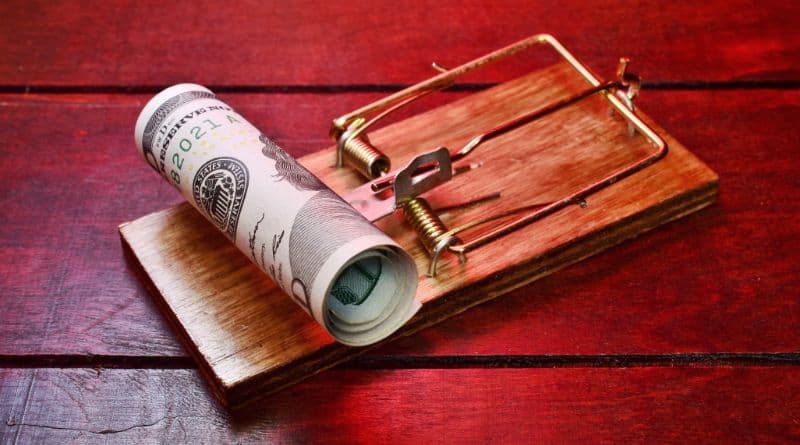[ad_1]
It’s nothing but rosy news coming from the Federal Reserve.
Recently the Fed released this reassuring statement:
“The banking system remains well-capitalized under even the harshest of these downside scenarios. . .”
In other words, everything is just fine.
Yet at the same time, the Fed also announced that it would impose restrictions on bank dividends and stock buybacks, essentially preventing banks from passing along their profits to shareholders.
If those two statements strike you as completely contradictory, you’re right.
If the Fed isn’t worried in the slightest because the banking system remains strong ‘even under the harshest downside scenarios’, then why restrict what banks can/cannot do with their private profits?
This forked tongue communication style is becoming somewhat of a trend.
Back in March, the head of the FDIC released a video asking Americans to NOT withdraw their money from the banks.
“Your money is safe at the banks,” she said, with soft piano music in the background. “The last thing you should be doing is pulling your money out of the banks thinking it’s going to be safer somewhere else.”
This reminds me of back when Ben Bernanke repeatedly told the public, and Congress, that housing prices would continue rise, and that a subprime mortgage meltdown would not affect the broader economy.
Or in July 2007 when Bernanke said: “Overall, the U.S. economy seems likely to expand at a moderate pace over the second half of 2007, with growth then strengthening a bit in 2008.”
And even in early 2008 when Bernanke said, “The Federal Reserve is not currently forecasting a recession,” and that the federal housing agencies Fannie Mae and Freddie Mac “would make it through the storm.”
Within months, Fannie Mae and Freddie Mac had collapsed, the economy went into the harshest recession since the Great Depression, and the entire financial system was on the brink of failure.
Bear in mind, this was the Chairman of the Federal Reserve telling people that everything was fine.
Now the Fed (and FDIC) are once again telling us that everything is fine.
Yes, everything is fine despite the fact that large sections of the economy have shut down, tens of millions of people are unemployed, countless businesses have failed and will never re-open, major cities across the United States have experienced extreme social unrest and continued economic disruption, and now a second wave of the pandemic is upon us.
But other than that, everything is just fine.
And, definitely, DEFINITELY, don’t worry about the banks. Don’t even think about the banks. Nevermind that some of the largest banks in the world failed in 2008. This time is different.
In fairness, they might be right. But who really knows?
This is one of the [many] big problems in banking: there’s practically zero transparency.
As an example, I was looking at Bank of America’s financial statements yesterday; their balance sheet shows $983 billion in loans.
And that’s about all the detail you get; even doing a deep dive into the footnotes and annual report shows little additional information.
What are the loan terms? What’s the duration risk? How valuable and marketable is the collateral? What legal security was taken over the collateral? Is there even any collateral at all?
Plus there’s extremely limited information on the bank’s exposure to riskier derivatives and collateralized loan obligations (CLOs– which are the toxic securities du jour).
In fact there’s far more information about Bank of America’s diversity and inclusion programs than disclosures about potential financial threats.
Again, it’s possible that there’s nothing to see here and everything is just fine. But given the lack of transparency, it’s impossible to independently verify.
The Fed and FDIC insist everything is OK. But the Fed and FDIC (along with the entire financial system) insisted that everything was OK back in 2008 right before everything collapsed.
Why should we be so trusting again this time in light of such obvious risks?
To be clear, I’m not suggesting that anyone should pull their money out of the banks.
But there are a few important things to consider:
You work hard for your money. So the decision of which bank to trust with your hard-earned savings should be deliberate.
Most people choose where to bank based on irrelevant factors, like location– ‘There’s a branch near my kid’s karate school, so I’ll deposit my funds there.’
There are far more important factors. Do they treat you well, or like a criminal suspect? Do they treat your money well, or do they gamble it away on some ridiculous investment fad?
Are they transparent? Are they conservative, responsible custodians of my money?
Those are the things that matter in a bank.
Here’s an easy litmus test: if your bank routinely sends you junk mail offering to loan money at super attractive terms, that’s a good indication you DON’T want to be a depositor there.
No money down? Teaser interest rates? No personal guarantee?
To me, those are reasons to take my money and run. Because when a bank makes it easy for people to borrow money, they’re taking on unnecessary risks. And they’re doing it with MY money. And YOUR money. Not theirs.
I prefer to deposit my savings at a bank that scrutinizes every prospective borrower and has incredibly stingy loan terms. Because at least I know they’re being very conservative with my money.
Second, you might want to also consider gold.
Gold was money for thousands of years. And the whole time, it held its value.
Even US dollars were redeemable for most of US history.
But in 1971, Nixon formally ended the gold standard and divorced the dollar from gold.
And go figure, the 1970s was a dismal decade of stagflation, where the value of the dollar plummeted, wages stagnated, and unemployment soared. What a surprise!
But gold did quite well, and silver did even better.
Maybe 5,000 years of history is wrong, and humanity suddenly got smarter in 1971.
Or perhaps gold is still the safest haven we have available, despite what the central banks would have us believe.
[ad_2]







